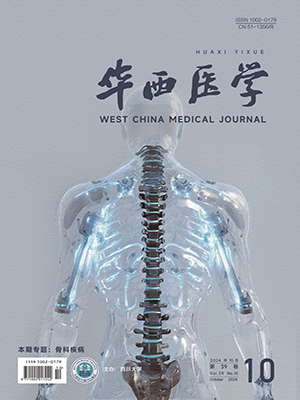| 1. |
Chin KY,Tang MY.Congenital adenomatoid malformation of one lobe of a lung with general anasarca[J].Arch Pathol,1949,48(2):221-229.
|
| 2. |
Stocker JT,Madewell JE,Drake RM.Congenital adenomatoid malformation of the lung:classification and morphologic spectrum[J].Hum Pathol,1977,8(2):155-171.
|
| 3. |
郭志伟,彭瑞鹏.先天性肺脏囊肿腺瘤畸形[J].临床医学,1998,41(1):92-95.
|
| 4. |
Moerman P,Fryns JP,Vandenberghe K,et al.Pathogenesis of congenital cystic adenomatoid malformation of the lung[J].Histopathology,1992,21(3):315-321.
|
| 5. |
Boglino C,Inserra A,Serventi P,et al.Neurotensin localization in adenomatoid cystic malformation versus normal lung:preliminary report of six consecutive cases[J].J Pediatr Surg,1992,27(1):57.
|
| 6. |
Peranteau WH,Merchant AM,Hedrick HL,et al.Prenatal course and postnatal management of peripheral bronchial atresia:association with congenital cystic adenomatoid malformation of the lung[J].Fetal Diagn Ther,2008,24(3):190-196.
|
| 7. |
Cass DL,Quinn TM,Yang EY,et al.Increased cell proliferation and decreased apoptosis characterize congenital cystic adenomatoid malformation of the lung[J].J Pediatr Surg,1998,33(7):1043-1046.
|
| 8. |
董春鸽,郑海红,吴亮,等.先天性肺囊性腺瘤样畸形Ⅱ型1例并文献复习[J].温州医学院学报,2009,39(6):619-621.
|
| 9. |
房惠琼,李启明,陶祥.成人先天性肺囊性腺瘤样畸形伴类癌一例[J].中华病理学杂志,2008,37(10):713-715.
|
| 10. |
曹辛,吴骏,洪伟.小儿先天性肺囊性腺瘤样畸形的手术治疗[J].中国医师进修杂志,2009,32(36):51-53.
|
| 11. |
Williams HJ,Johnson,KJ.Imaging of congenital cystic lung lesions[J].Paediatr Respir Rev,2002,3(2):120-127.
|
| 12. |
Griffin N,Devaraj A,Goldst raw P,et al.CT and histopat hological correlation of congenital cystic pulmonary lesions:a commonpat hogenesis[J].Clin Radiol,2008,63(9):995-1005.
|
| 13. |
Lima M,Gargano T,Ruggeri G,et al.Clinical spectrum and management of congenital pulmonary cystic lesions[J].Pediatr Med Chir,2008,30(1):79-88.
|
| 14. |
卢根,申昆玲,胡英惠,等.小儿先天性肺囊性腺瘤样畸形23例诊治分析[J].中国实用儿科杂志,2009,24(7):539-541.
|
| 15. |
Tsai AY,Liechty KW,Hedrick HL,et al.Outcomes after postnatal resection of prenatally diagnosed asymptomatic cystic lung lesions[J].J Pediatr Surg,2008,43(4):513-517.
|
| 16. |
郭志平,武端清.小儿先天性肺囊性腺瘤样畸形手术诊疗体会[J].天津医药,2012,40(11):1171-1172.
|




